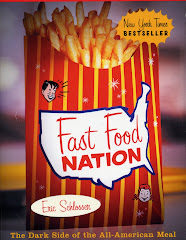J.R. Simplot, born 1909, was a self made entrepreneur who began to sell potatoes in Idaho in the early 1920s. As an eighth-grade dropout, he used his wits to turn a profit in several business transactions, thus allowing him to start his potato business. By the 1940s, "Simplot was the largest shipper of potatoes in the West, operating thirty-three warehouses in Oregon and Idaho". After World War II, Simplot began to experiment with frozen french fries, convinced that they would be the food of the future. In 1965, Simplot met with Ray Kroc, McDonald's chief executive of sales, to discuss his idea. They partnered, opened a warehouse used solely for the production of McDonald's frozen french fries, and by 1966, McDonald's began to sell J.R. Simplot Company fries. J.R. Simplot's fries turned an enormous profit for McDonald's and therefore helped them advance as a business, from 725 restaurants to 3000. He accelerated the growth of other fast food companies and contributed greatly to the industry as a whole.
2. What is the "fallacy of composition"?
"Fallacy of composition is a logical error- a mistaken belief that what seems good for an individual will still be good when others do the same thing". So, in Idaho, this directly relates to potato farmers. There are only a few multinational cooperations that handle potato production in the U.S. So, many potato farmers belong to the same company and earn their wages through that same company. The U.S. agriculture business employs specialized crops, advanced technologies, and an array of pesticides that makes our farmers the most profitable in the world. The only problem is, with more farmers adopting this lifestyle, many more "driven off the land". So, what is good for one person is not necessarily good for another whatsoever.
3. What are some of the similarities and some of the differences between "artificial flavors" and "natural flavors"? Where is the "flavor industry" located?
The only difference between natural and artificial flavors is the extraction process. Artificial flavors are made in a laboratory by mixing certain chemicals to get the desired smell. One might mix thousands of chemicals together in minute amounts to get the flavor of a marshmallow. Natural flavors, on the other hand, are directly obtained from the source. Amyl acetate, a banana flavoring is natural when you get it by distilling a banana in a solvent, but artificial when you get it by mixing vinegar with amyl alcohol. The flavor industry is mostly concentrated onto the New Jersey turnpike, where 2/3 of the United State's flavors are produced. Companies from around the world are based there.

No comments:
Post a Comment